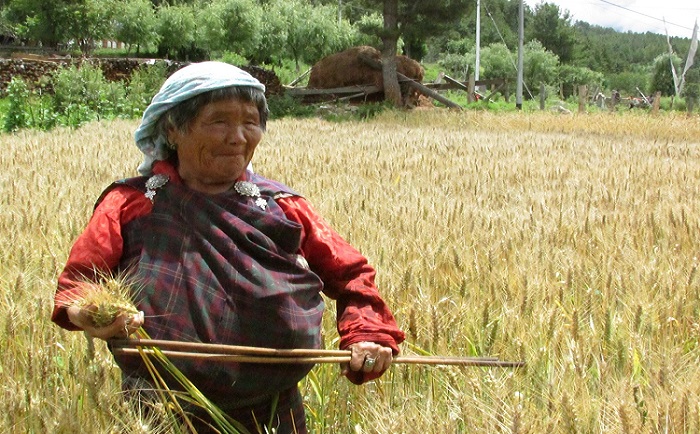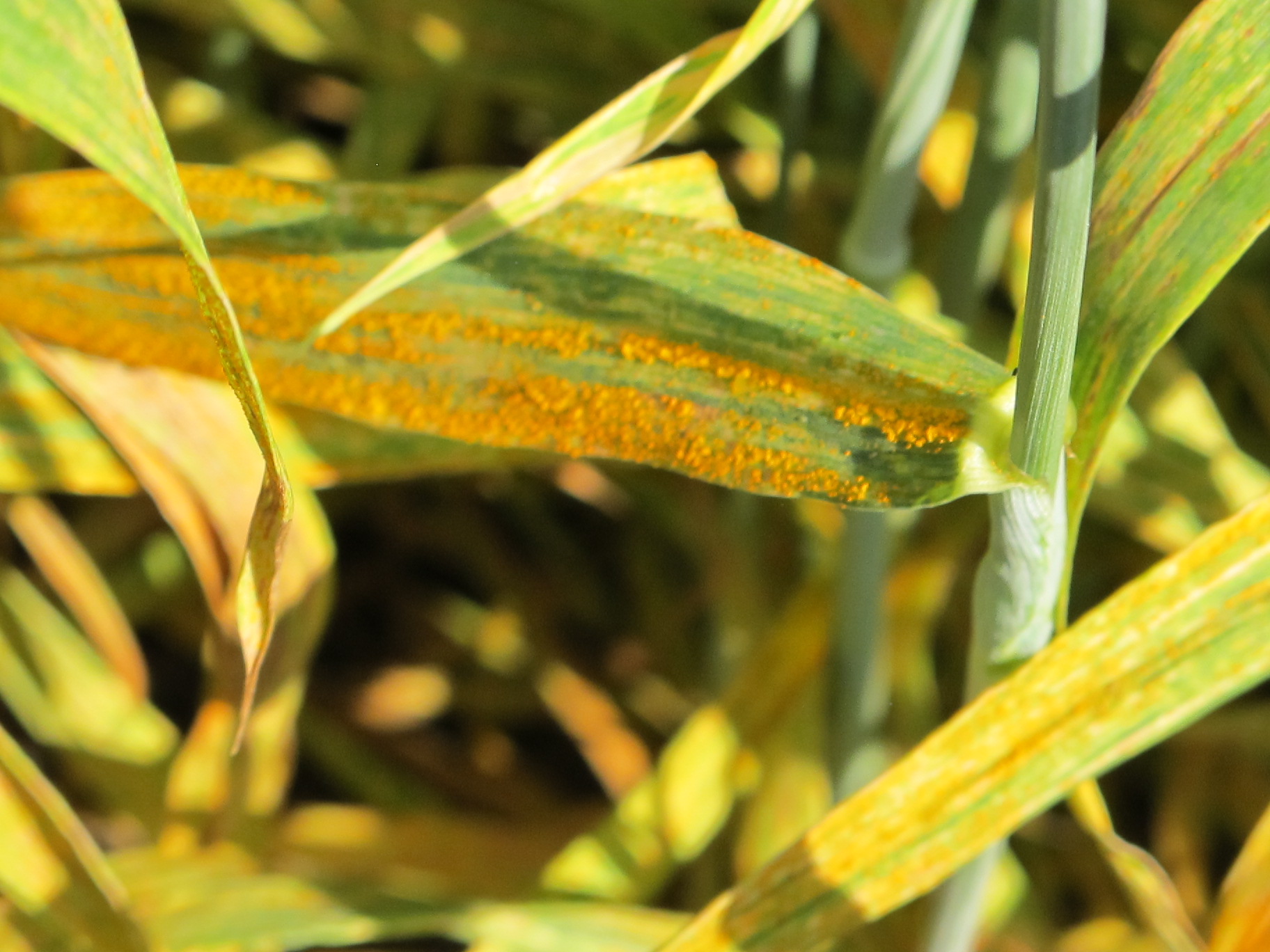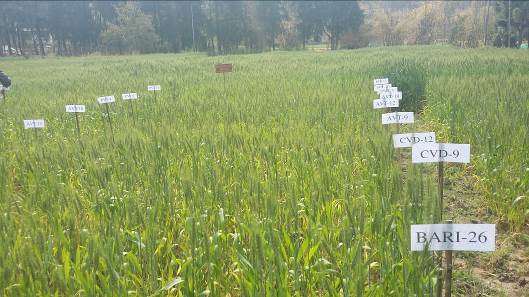
BHUTAN — Yellow and brown rusts are among the most common and damaging challenges to wheat production in Bhutan. Yellow or stripe rust (Puccinia striformis f. sp. tritici), a disease favored by cool weather conditions, is a major threat owing to the prevalence of cool winter conditions during the cropping season in most wheat growing regions. In Bhutan, yellow rust is the first disease to appear in the cropping season and, if left uncontrolled, has the potential to destroy the whole wheat crop. It has occurred every year in most wheat growing areas over the last two decades.
Brown or leaf rust (Puccinia triticina Eriks.), the second most important wheat disease in Bhutan, is also favored by climatic conditions, with severe infection on different advanced wheat lines being recorded over the last ten years. This is an indication that leaf rust could be just as threatening as yellow rust if susceptible cultivars are grown under favorable environmental conditions. Finally, if these rusts are not controlled, it is possible that Bhutan could become a primary source of inoculum, which would then be carried to its neighbors by the wind.

Bangladesh, Bhutan’s southern neighbor, does not have much of a history of rust diseases, but climate change could alter that. And while yellow rust doesn’t occur at all in Bangladesh and leaf rust appears only occasionally (albeit with high intensity), both have the potential to spread in the country.
The absence of high rust pressure in Bangladesh is a serious challenge when it comes to evaluating the rust resistance of wheat lines needed to prepare for uncertain future climates. In contrast, Bhutan is in a strategic position to conduct yellow and leaf rust epidemiological studies and is active in regional and global efforts aimed at studying and managing rust. Therefore, for the first time, Bhutan and Bangladesh are collaborating on evaluating Bangladeshi wheat lines for resistance to yellow and leaf rusts with support from CIMMYT.

Photo: Sangay Tshewang/RNRRD
During the 2015–2016 cropping season, Bangladesh sent 50 advanced wheat lines identified as having potential rust resistance to Bhutan for screening. The evaluation was done under natural conditions at the Renewable Natural Resources Research and Development Center (RNRRD) in Bajo, about 70 kilometers east of Thimphu, Bhutan’s capital. The results are promising, with 30 lines showing resistance to the rusts. The data were shared with Bangladeshi partners, who will use them to inform their breeding decisions.
Bhutan has been collaborating with CIMMYT’s Global Wheat Program since 2011 and has released three rust resistant varieties from CIMMYT in the past two years. Although there has been regional collaboration on wheat research in South Asia mainly through CIMMYT, testing wheat lines from Bangladesh for rust resistance in Bhutan is a first.

 Capacity development
Capacity development 
